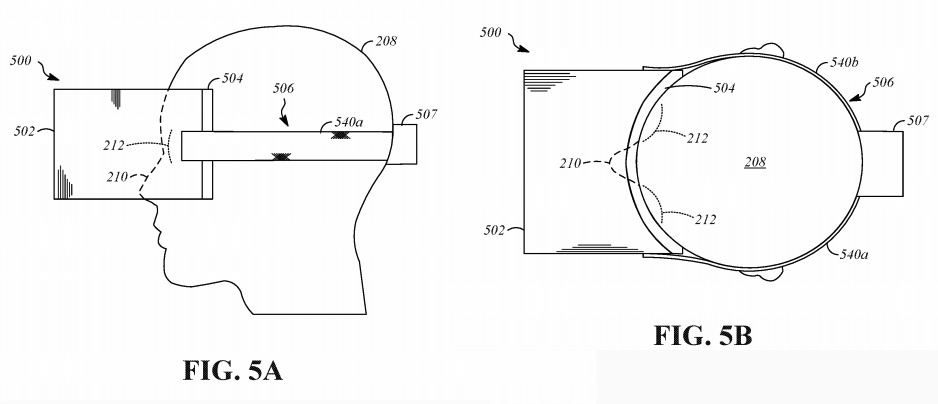Apple is showing signs it is continuing to work on producing augmented reality and virtual reality glasses, including creating its own method for mounting the headset on the user's head and coming up with a way to regulate heat generated by the hardware while it is in use.
Apple has been repeatedly rumored to be developing a form of smart glasses or a headset that can offer an Apple AR or VR experience. Reports dating back to November 2017 advise of a project codenamed "T288," with supposed features for the hardware including the use of 8K-resolution displays for each eye, a processor faster than any Apple currently produces in its released products, and using WiGig to wirelessly communicate with a host device.
While rumors point towards the potential specifications of the hardware, a pair of patent applications published by the U.S. Patent and Trademark Office on Thursday indicate Apple is working to solve problems connected to the rumored hardware. One relates to user comfort, the other for protecting the components from damage.
The first patent application, a "head-mounted display with adjustment mechanism," describes how a headset could be mounted to a user's head, and improvements to the ways it could be adjusted. Taking the form of a ski goggle-style headset that goes around the head, but without the band for over the head as used by existing VR headsets, the patent application is more about how to tension the band to keep the headset firmly in place.
In one system, a box is placed midway along the band and rests at the back of the user's head, though it could feasibly attach to other positions along the band, or even embedded inside the main body of the headset. The box contains an electric motor, which can constrict or expand the length of the band, making it tighter or looser in the process,
A second version involves a gear rack, which is used for similar tightening and loosening purposes. A third method involves the use of a fixed headset frame that is lined with pneumatic bladders. Once on the head, the bladders inflate, trapping the headset on the user's head with cushioning.
In all cases, Apple also suggests the system could employ eye tracking to monitor the distance between the lenses and the display assembly and the user's eyes. This would be able to help detect the relative motion of the headset to the eyes, which would not only help the software produce a more accurate visual experience when in motion, but also could tell the headset if it is fitted tight enough to the user's head.
The other patent application, "thermal regulation for head-mounted display," is relatively self-explanatory. Due to the potential for displays and computing hardware to warm up over time, such as with normal computers and notebooks, it would be expected that a VR or AR headset would do the same.
Apple's solution is simple, in that it effectively uses a fan to push air through the chamber of the headset where the components are located. Multiple fans can be used to push and pull air through different sections of the component chamber.
While fans blowing onto a user's eyes could cause irritation, the application suggests the possibility for air to pass from the eye chamber of the headset into the component chamber, with air entering the eye chamber either through vents or via the face seal, if it is made of permeable material like sponge or foam. Pulling air out from the eye chamber could also offer benefits to the user, like making the headset cooler to wear, making it easier to use for longer periods.
It is suggested the fans could be controlled by a number of elements, including the temperature of components, humidity in the eye chamber, the user's skin temperature, and even the level of perspiration.
As usual with patent applications, Apple makes numerous filings every week, and while they do suggest areas of Apple's interest, it isn't a guarantee that the ideas will make their way into commercial products and services.
Apple does have a number of existing patents for AR and VR hardware, covering topics such as eye tracking and partial display updates, and is widely believed to be working on some sort of product in that field. It is also suggested that it could take the form of smart glasses, a lighter form of AR goggles, though such wearable items aren't expected by analysts to be released by Apple until 2021 at the earliest.
 Malcolm Owen
Malcolm Owen










-m.jpg)







 William Gallagher
William Gallagher
 Christine McKee
Christine McKee


 Charles Martin
Charles Martin




-m.jpg)






15 Comments
Apple needs something like this to make the ridiculous power of its phones useful...
LOL. No. An AR device that doesn’t look and feel like glasses is doomed to fail. VR goggles are even more doomed.
The AR/VR ski mask is a red herring, the eye-tracking is the real patent.